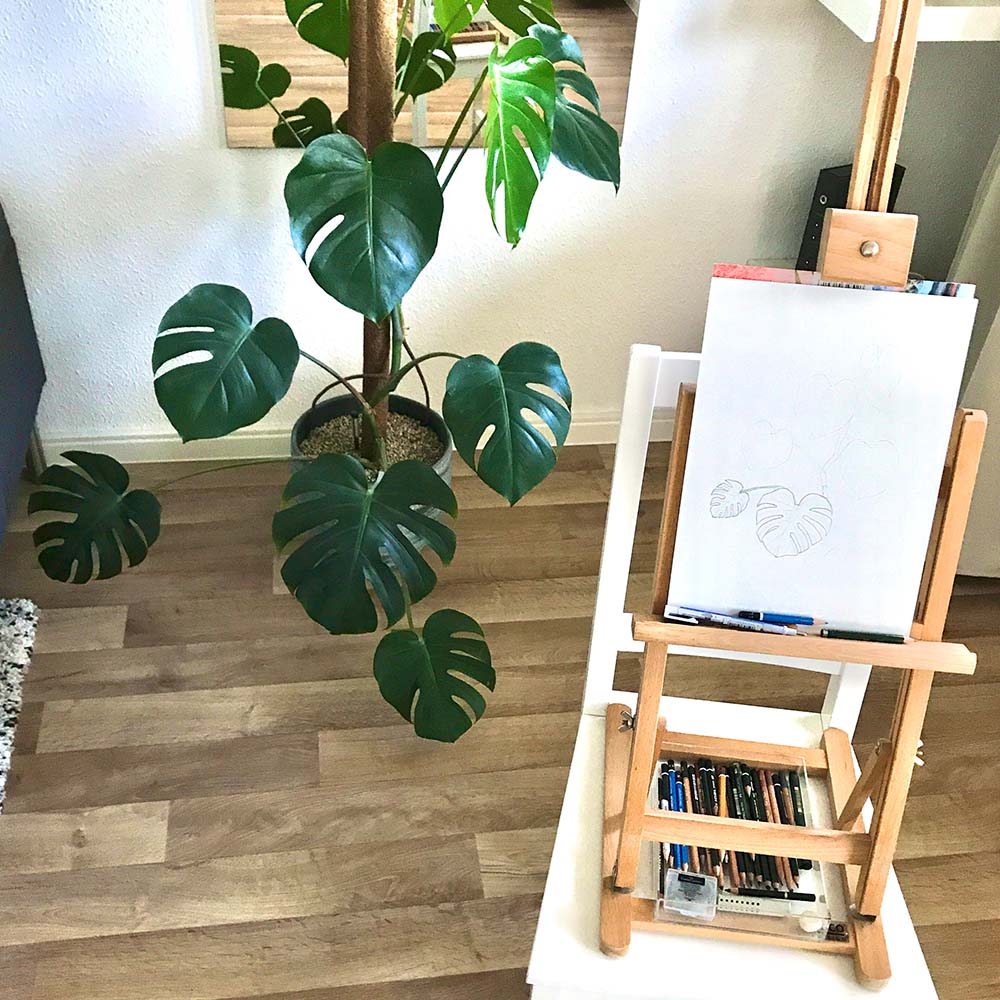
Easel: A Must-Have for Every Artist?
Learn everything important about different easels and which one suits you best.
An easel is undoubtedly a staple piece of equipment for a professional artist. But is it worth purchasing for beginners and hobbyists too? The short answer is Yes.
Whether you are an experienced professional or an aspiring artist, an easel is more than just a simple stand for your canvas. In this comprehensive guide, you’ll learn everything you need to know about easels and be able to better decide which one fits your artistic plans.
What is an Easel?
An easel is typically a three- or four-legged frame that helps artists position their canvas, drawing pad, or other painting surfaces at a desired working height. This allows artists to work in an upright and comfortable position.
Easels come in various designs, sizes, and materials to meet different needs and preferences. The main function of an easel is to keep the painting surface stable and upright. It not only provides an ergonomic working position but also makes it easier to paint larger formats.
An easel also offers the advantage of viewing the artwork at a suitable angle while painting or drawing. This helps in assessing proportions, perspective, and color application more accurately and making necessary adjustments.

François Bonvin, Public domain, via Wikimedia Commons
Does Every Artist Need an Easel?
Technically, you don’t need an easel to create art. However, using an easel can have a significant positive impact on your physical health in the long run.
Working regularly at a table in a hunched position can lead to back pain, muscle tension, and other health issues. An easel allows you to paint or draw in an upright position, helping you maintain an ergonomic posture. This reduces strain on your back and neck, enabling you to work comfortably for longer periods without developing physical discomfort.
Moreover, an easel offers practical benefits for artistic work. It allows you to view your artwork from an appropriate position to better assess proportions, perspective, and color application.
This is especially useful when painting or drawing from a live subject.
With an easel, you can position yourself in a way that you can view your reference without moving your head too much. This is important for accurately transferring your reference into your artwork.

An easel is not just for painting. Although it is mostly used by artists painting with oil or acrylic, it is also great for drawing with pencils, colored pencils, charcoal, or other drawing materials.
What to Consider When Buying an Easel
When purchasing an easel, there are several important factors to consider to ensure it meets your needs and artistic preferences. To ensure you can use your easel for a long time, it is worth investing a bit more in a high-quality easel rather than buying a cheaper one that may break.
Material
Easels are traditionally made of wood, although there are some modern models made from aluminum on the market.
High-quality wooden easels are typically made from beechwood, which is particularly sturdy and durable. They are also oiled to protect the wood from moisture and prevent warping over the years. In addition to beechwood, elm wood is also highly recommended as it has similar properties.
Aluminum has become popular for field easels used for outdoor painting. They are lightweight, easy to transport, and better withstand various weather conditions such as heat, cold, or moisture compared to wooden easels.
Easels made from pine wood or plastic are not recommended. While these tend to be cheaper, pine wood warps quickly and plastic can crack or break if poorly manufactured.
Painting Height
Consider what painting height or canvas size you prefer, as not all easels can support large formats stably. Typically, the maximum painting height or size for each easel is specified, so you don’t have to figure this out after purchase.
Crossbar
The crossbar is the part of the easel where the canvas rests. For large canvases, it is important that this bar is wide enough to securely hold the canvas and prevent it from wobbling while painting the outer areas of the canvas.
For large canvases, a crossbar with a minimum width of half a meter is recommended.
Height Adjustment
If you want to work standing, make sure the easel is adjustable in height. The crossbar should be easily movable so you can comfortably adjust your working surface.
Studio easels can be equipped with a crank for height adjustment, which is particularly practical for working with large and heavy canvases. Without a crank, you’ll have to adjust the height using a hook, holding the entire weight yourself.
Fixing Bar
Some easels come with a fixing bar at the top. This bar secures the canvas from above, providing additional stability as the canvas is clamped between the bottom crossbar and the top fixing bar.
The fixing bar is not essential, especially if you don’t regularly work with large formats.
Shelf
A shelf below the crossbar can be useful, especially if you paint outdoors. You can place your painting supplies like brushes, palettes, and paints on it to keep them within reach.
Easels without a shelf are not inferior, and you can always place your painting supplies on an alternative surface.
Weight
The weight of the easel is important depending on how you plan to use it. Lightweight easels are great for traveling or outdoor drawing, as they are easy to transport. However, if you often work indoors with large formats, heavier easels provide more stability and prevent quick tipping.
Different Types of Easels
Choosing the right easel depends on several factors, such as your available space and whether you plan to work indoors or outdoors. There is a wide selection of easels, and there is a suitable model for everyone.
Studio Easel
The studio easel is ideal for professional artists with a dedicated studio. It can easily hold large and heavy canvases and often includes a shelf for painting supplies.
Studio easels can be adjusted both horizontally and vertically to provide the best working angle. Due to their robust construction and functionality, they are among the most expensive easels on the market.
Academy Easel
The academy easel is a three-legged easel often used in art schools or art classes. It is quick to set up and take down, making it space-efficient. This easel is a good choice if you have limited space. It can easily hold large and heavy canvases, and the working surface is adjustable in height. The canvas is slightly tilted backward to allow a comfortable working position. Academy easels are easy to handle and provide solid support for painting.
Field Easel
The field easel is ideal for outdoor painting but can also be used at home if space is limited. It is collapsible and thus easy to transport. This easel is more suitable for smaller canvas formats. It allows for quick folding if weather conditions change and you need to seek shelter.
Box Easel
The box easel is perfect for travel or outdoor painting and drawing. It combines the functions of a field easel with a practical paint box.
Necessary painting supplies can be stored in the box easel, which folds into a compact case. Smaller canvas formats are also recommended here.
Table Easel
The table easel is ideal for artists who often paint at a table. It takes up little space and can be stored in cabinets or drawers.
This easel is more suitable for smaller canvas formats, and the table itself can be used as a surface for painting supplies. It also provides an ergonomic working position as it is placed directly on the table.
Watercolor Easel
The watercolor easel allows you to adjust the working surface at any angle, even horizontally like a table. This provides full control over how watercolor paints spread.
It is specially designed for watercolor painting and offers various adjustment options for the best results.